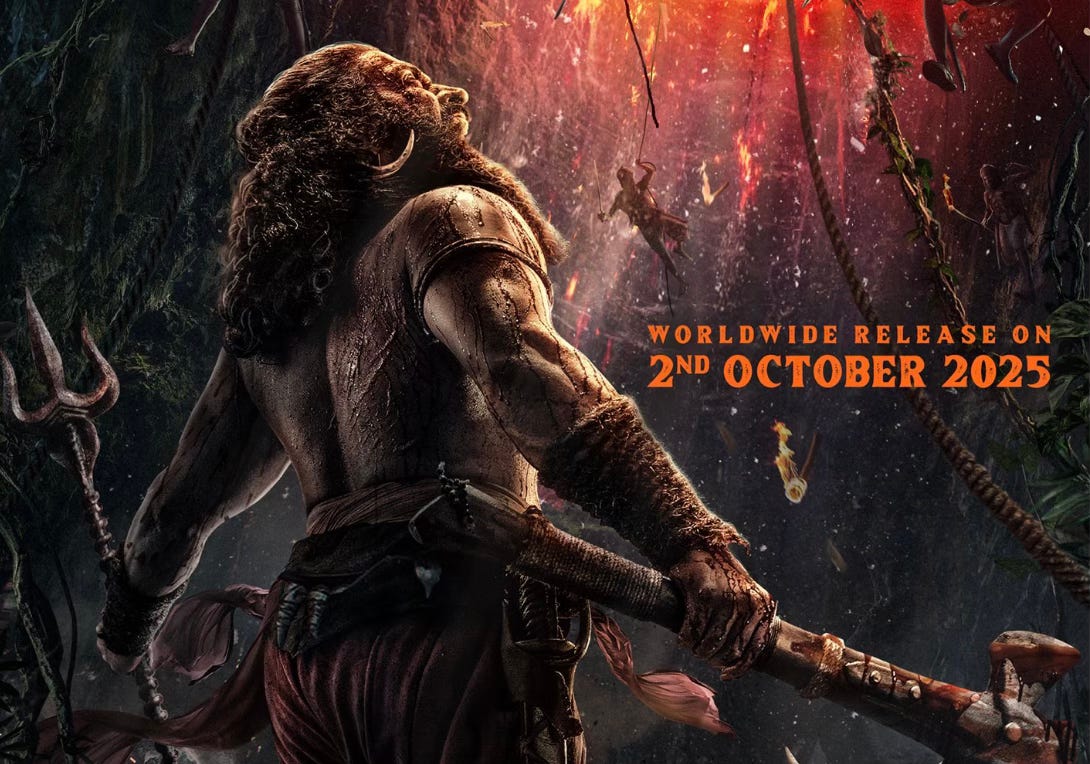I had written about the first Kantara movie. So it makes sense to share some thoughts about the second instalment of what seems to be an evolving trilogy. There are a few thoughts that emerged in my mind a week after watching this in the theatre.
The Movie
Kantara Chapter 1 goes back in time to figure out the history of the sacred forest and gods. It makes sense to note that there was already a backstory in the original movie as well. But now it turns out there’s another backstory. All of this is connected to the location where the person carrying the divine spirit had disappeared.
One would have expected another backstory to be tedious and drawn out. But the grand visuals and well-structured story with interesting characters holds the audience. Innovation on several fronts of the movie have made the sequel as good as the first if not better.
Themes — Old and New
The depiction of tribal communities and their beliefs was a refreshing change in Indian cinema (at least in a big hit). This theme is kept alive, but it adds another dimension. Historical enslavement of tribes by more advanced communities has been added to the mix.
There are quite interesting explorations of the evolution of communities via trade and commerce. The idea of self-sufficiency via controlling desires has been touched upon. But this aspect doesn’t sound preachy. One would be tempted to expound the theory that greed is the cause of all damage. But, the movie deals with it from a power-struggle POV.
It’s ok to depict the magical aspect of divine. This is something that made the first Kantara movie popular or even ‘respected’ if one might use that adjective. But this one ventures into black magic. I hope that the black magic industry doesn’t get a fillip in coming times.
The movie also depicts the usage of drugs/substances which might have been the case with tribal communities. Also, isolation of different tribes giving way to diseases and death has also touched upon the idea of crude biological warfare that might have occurred in the past.
Innovation
The use of graphics and drones in cinematography has been done seamlessly. It doesn’t feel forced or out of place. The war scenes kinda remind you of Bahubali movies. But this one feels a bit more real though one might say that a large part of it is still unreal.
The finesse of the production team comes through as the movie turns out to be a visual treat. At the outset, this is the biggest area of growth and improvement when compared to the first Kantara movie.
Of course the lead actor Rishabh Shetty has a better body (in my own mind). The costume design has levelled up and acting remains top notch. I don’t want to get into those details as I’m not an expert.
Predictable Stuff
There are a few predictable templates in this movie (or any movie for that matter). If you have thirty minutes left in the show and the story feels like it’s ending, then you have to brace yourself for another twist.
If there’s a fight scene, then the hero tends to face losses initially and reaches a point where it feels like he might just lose. But then you have to expect a twist that gives him an unexpected edge which eventually makes him win.
The amount of joy and aha moment experienced by the viewer is directly proportional to how naive and open-minded he or she is.
Final Thoughts
The movie must be watched on the big screen. And it ends with some reference to part 3 coming in future. One can only imagine how many threads or directions that the next movie could take.
I would caution non-Kannada viewers about the quality of translations though I’ve not watched Hindi or other versions of the movie.
Since Rishab Shetty thinks and breathes in Kannada, the translated versions might have diluted in poetic/literary value. So only a Kannada speaking viewer can get the maximum juice out of this movie though one can contend that others will enjoy the story and visuals in equal measure.
But till then, one can say that this is a big win for Kannada Cinema and it will bring truckloads of money to the industry which has hitherto had very small dreams on the national/international stage.


